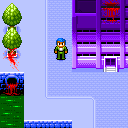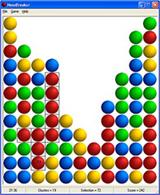A Brief Discussion on the Creation of 2D Game Maps
These days, there has been some exchange between our company's program and other companies regarding outsourcing projects. Both sides have disagreed on the map issue, and in my opinion, I feel that the other party has a certain bias in their understanding of maps. Based on my personal experience, I'd like to talk about the creation of maps.
Firstly, the maps I am referring to here are mainly 2D, top-down, 45-degree straight overhead, and 45-degree slanted overhead maps.
Generally speaking, the simplest map is equivalent to a background. For example, on a bloody land, if no obstacles are set, then the map is just a background. If obstacles are set, then the map gains an additional attribute—blocking. Therefore, these are the two most basic attributes of a map: display and blocking.
There are many ways to implement blocking, generally two methods: one is to define impassable map tile blocks, so constructing a map only requires one layer. The other method involves creating two layers: a display layer and a control passage layer. With these two fundamental functions, the map begins to take shape.
Then, more complex features can be added—an event layer. Similar to the blocking layer, the difference is that the event layer defines block categories used to achieve different functions, typically switches and events.
Generally speaking, the display layer is not usually a single layer. To convey depth and three-dimensionality, the display layer is typically divided into two layers: one is the basic map layer, and the other is the irregular decoration object layer. Then, the character layer is placed above the base layer but below the irregular decoration object layer. By adding blocking definitions, you can achieve the effect of characters walking across the map while being occluded by objects, showcasing the hierarchy of the map scenery.
So, given that the map needs to implement so many functions and perform so many tasks, who should be responsible for completing the map, and how should it be done?
Clearly, this is mostly the job of the planner. Only the planner knows what kind of game to make and what kind of map would be most appropriate. Such matters naturally fall under the planner's responsibility; otherwise, what else would the planner do?
So, what is the process of making a map?
Generally, the map-making process is divided into several steps: slice creation, map creation, and script creation.
Slice creation refers to the process of creating map slices. First, the planner proposes image requirements, which usually include descriptions of basic terrain and elements, i.e., the ground and ground structures as well as "decorations." Then, the art team creates concept art. The first step is to determine the tone and style, followed by producing detailed concept art based on the preliminary concepts. This process involves considering many factors, testing the skills of the art team. The next step is to extract map slices from the detailed concept art. Once the map slices are basically ready, the art team's work is complete.
After slice creation is completed, the formal creation of the map file begins. Here, a map editor is required. There are many such tools available online, and various companies also develop their own tools. However, I personally believe that a map editor should at least have the following functions to be useful: multiple slice calls, support for irregular selection boxes, layering functionality, layer transparency, setting slice blocking, setting event switch trigger points, and supporting copy-paste.
To start creating the map, the planner’s preliminary preparation should be very thorough. The map-making process is actually a further materialization of the plot. The content to consider during the creation process is quite complicated, such as: map transfer relationships, map usage timing (how many times it will be used and at what stages of the game), map event settings, map switch settings... It can be quite headache-inducing without a good editor.
Basically, after passing through the production phase, the map compilation is almost complete. Next, map script creation needs to be done, or rather, using a script-like mindset to organize map resources, such as file name definitions, call relationships, monster configurations, NPC configurations, animation configurations, etc...
Once all these things are handled... hahaha, your map is complete. After all the hard work, you can go out and celebrate with the art team and the programming team!




